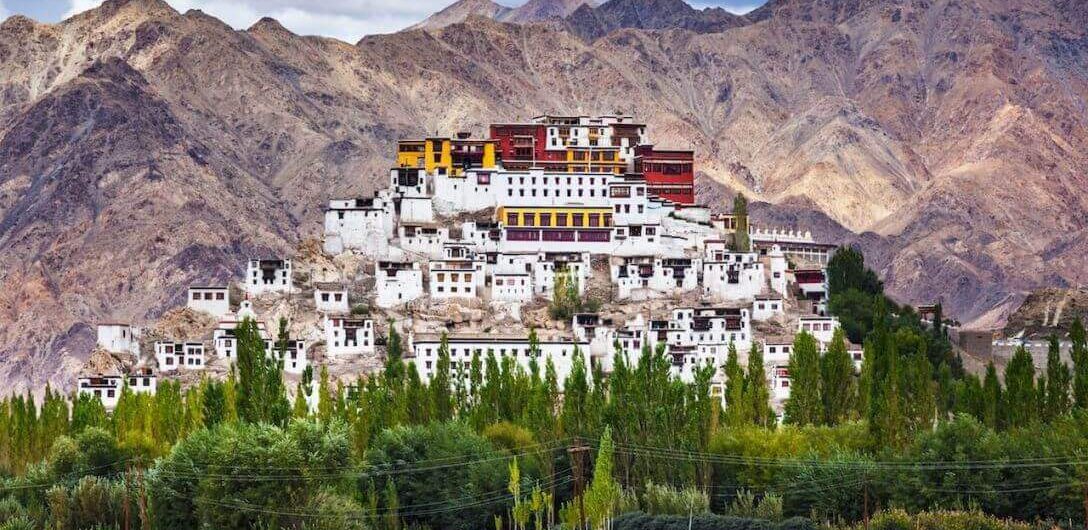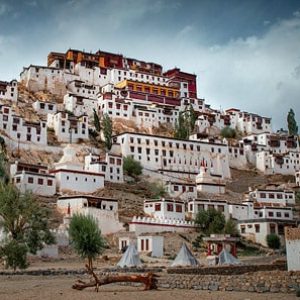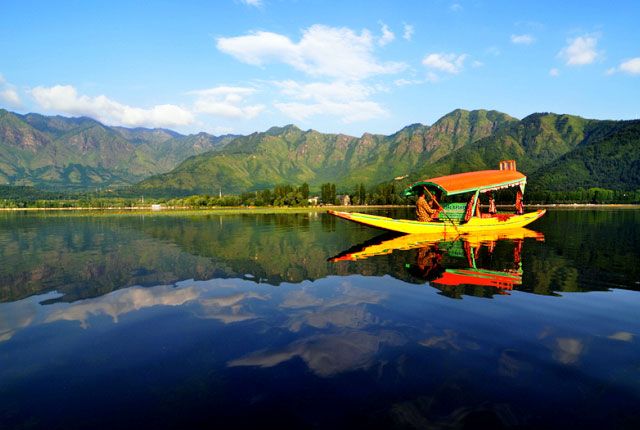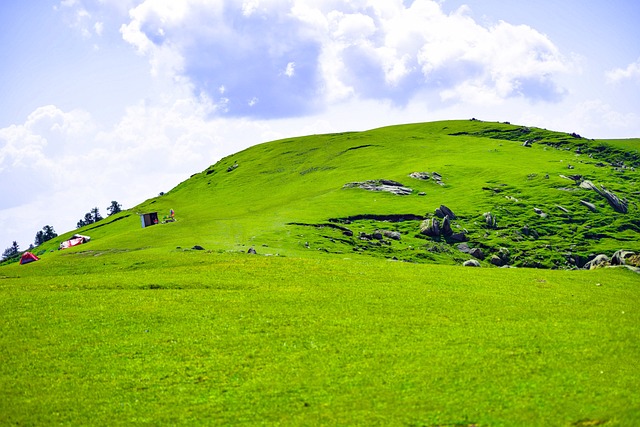
Thiksey Monastery : A Sacred Escape
Table of Contents
ToggleOverview
One of the most outstanding Tibetan Buddhist monasteries in the region, Thiksey Monastery is located right at the very heart of the Indus Valley, near Leh, the capital city of Ladakh. The quite old Gelongpa sect monastery not only gives its followers spiritual solace but grants a cultural enlightenment experience for the touristy since it stands tall over the valley. The beautiful architecture, deep-rooted history, and tranquil surrounding make Thiksey Monastery one of the most iconic sites to be seen in Ladakh and a destination where the pilgrims and travelers from around the globe come to see.
Whether you are an old traveler or a young traveler, or spiritual and interested in this kind of architecture and culture, no experience can’t be described by a visit to Thiksey Monastery. This is a guided tour of its history, architecture, cultural significance, festivals, and tips and tricks on visiting Thiksey Monastery.





Historical Significance of Thiksey Monastery
History and How it Started
Thiksey Monastery was founded in the 15th century by the Tibetan Buddhist disciple of the big saint Tsongkhapa, Lama Lhasey Zangpo. Apart from establishing Thiksey Monastery, he also established the Gelugpa tradition of Tibetan Buddhism. The monastery is built in a traditional Tibetan fashion and represents the Gelugpa (Yellow Hat) school of Tibetan Buddhism, with which its most significant leaders, the Dalai Lama, and other bright minds of Tibetan Buddhist theology are involved.
It was primarily constructed to serve as a center of learning and spiritual practice, dedicated to the preservation and transmission of teachings of Buddhism in Ladakh. Thiksey-the name derived from the Tibetan word “Thikse,” meaning “hill”-is located on top of a hill-a hallmark of many Tibetan Buddhist monasteries-a symbol of ascent toward enlightenment. Its position above the sprawling Indus Valley and nearby villages makes it a striking and spiritual sight.
The site becomes significant in Buddhist mythology. It is built on a hill that resembles a small Potala Palace, the holiest site for all Buddhists on earth in Lhasa, Tibet. This only serves to enhance the spiritual sanctity that the Thiksey Monastery holds.
Thiksey as a Spiritual Centre
Now Thiksey Monastery became the nucleus of religious Ladakh. It is one of the important monastic centers in Ladakh, Tibet, and Nepal. Young monks, guest monks, and master monks all learn Buddhist philosophy, meditation, and rituals here. Thus, this great monastery has preserved the religious texts and practices of the Gelugpa tradition. It is hence very important as an educational institution for future monks.
The Abbot is the spiritual head of the monastery and a religiously prominent leader of the region. From ages, the monastery has been a seat of learning in Buddhism where monks have taken part in different rituals and mystic practices. Thiksey is no ordinary monastery; it is an institution in itself, still holding an immense stature in preserving the Buddhist heritage of the region.
Majestic Architecture of Thiksey Monastery
Ladakhi Design
The architecture of the Thiksey Monastery mirrors the magnificence and cultured forms of Tibetan Buddhist architecture. The fortification outline of the monastery is carried on complete Tibetan lines with large walls, monumental gateways, and a series of rooftop-level terraces. However, at the same time, it also sustains elements of the traditional Ladakhi architectural designs while using local materials of mud brick, stone, and wood.
Thiksey Monastery comprises a few stories and has important religious as well as cultural halls distinguished with a certain arrangement of stupas, prayer wheels, and a temple complex. It is not difficult to get lost in the labyrinths of staircases binding the monastery, scenery is breathtaking, though.
Main Prayer Hall
The Dukhang is the central place of Thiksey Monastery-the ritual gathering, meditation, and rituals place. Inside one finds the very feel of grandness in this place. The grand hall houses a great shrine where there stands an imposing stature of Maitreya Buddha, the Buddha of the Future, about 15 meters tall, or around 49 feet. This giant figure is indeed one of the largest of its kind in Ladakh and is therefore a point of focal devotion and ritual activity inside the monastery on a daily basis.
There are wonderful murals on the walls of Dukhang narrating a number of Jataka tales stories of the Buddha’s former lives apart from the varied Buddhist gods and goddesses. The vibrancy of these paintings clearly describes the Ladakhi tradition of religious art, conferring the Tibetan motifs with influences derived from the local culture.
Many Temples and Shrines
The Thiksey Monastery is scattered with numerous temples and shrines devoted to varied dimensions of Buddhist spirituality. Among them, the Maitreya Buddha temple is accorded maximum importance. The Maitreya temple is located on the third floor of the monastery. In this temple, only the future Buddha is held. This temple has very beautiful statues of Maitreya and other gods. These consist of Avalokiteshvara-the Bodhisattva of Compassion, Manjushri-the Bodhisattva of Wisdom, and Vajrapani-the protector of Buddha’s teachings. The images are actually done in good vibrant colors and are worshipped by locals as well as pilgrims coming to Thiksey.
Apart from the magnificent temple, almost all the corners of the monastic complex have subsidiary shrines that house their respective relics, prayer flags, and sacred offerings. The prayer wheel hall is also beautiful, in which one can spin the big prayer wheels along with chanting mantras for gathering merit or invoking luck. The spinning of the prayer wheels forms an important function in the spiritual practices at Thiksey.
The Monastic Living Quarters
It is simultaneously a community of monks and a place of worship. The monastery houses simple functional quarters, the monks live on the upper floors arranged around a central courtyard, providing a quiet atmosphere both for study and meditation and day-to-day religious routines. Thiksey Monastery is a monastery mostly dominated by monks, but sometimes it allows tourists inside to witness the monks as they go about their activities whether in prayer or debating a philosophical issue, a significant component of the life of Buddhists.
Festivals and Rituals at Thiksey Monastery
Thiksey Gustor Festival
One of the best times to go visit Thiksey Monastery is for the annual Thiksey Gustor Festival, a religious festival during which the place bustles with color and life in the otherwise dull month of October or November. The monks and other local Ladakhi people celebrate this festival with great fervour and it is a highlight of the regional religious calendar.
The Cham dances at Thiksey Gustor are actually a form of masked dances with strong spiritual origins. They are intended to symbolize the triumph of good over evil and convey messages to the community. The costumes and masks used by the dancers are quite elaborate, portraying all manner of deities and spirits taken from Tibetan Buddhist mythology.
Except for the Cham dances, prayer rituals, deities offering, and mantras chanting, there are just a few examples of the numerous celebrations.
Local people, together with tourists, join the crowds to mark this holy festival in search of happiness and enlightenment.
Losar (Tibetan New Year)
Losar is also one of the major celebrations at Thiksey Monastery-the Tibetan New Year. It is a festivity wherein the monastic complex is nicely decorated with colored festoons, prayer flags, and innumerable friendly get-togethers to wish the forthcoming New Year with positive energies and blessings. Along with people of Ladakh, monks offer prayers, special rituals, and family gathering welcoming the New Year. Losar is also the first month of the Tibetan lunar calendar, during which one says bye to both the old year and old habits of life and receives energized hopes for the future.
In Losar, visitors arriving at Thiksey will see that all are celebrating the strongest cultural traditions of Ladakh and take part in the prayer and celebrations.
The Thiksey Daily Ritual
Thiksey Gompa seems to be so peaceful and pious on any day. Daily prayers take place by chanting in the Dukhang and other monasteries. The monks chant mantras and pray, doing rituals; indeed, one can catch up with the various serene and sacred moods at every nook of the monastery. Those who have an interest in knowing the practices of Buddhists will find this to be an opportunity to witness the monastic life firsthand.
Visit Information for Tourists
How to Get to Thiksey Monastery
Thiksey Monastery lies at a distance of 19 kilometers from Leh. By four wheeler, taxi, and motor bike, Thiksey Monastery is easily accessible. The road takes 20-30 minutes via lush Indus Valley. Leh taxis also available; they take the visitor straight to the monastery.
For those who like to pass through an adventure journey, a hike to the monastery is possible. Through the many routes, one would see marvelous vistas of the Indus River and Himalayan mountain ranges.
Best Time to Visit
Best time to visit Thiksey Monastery is between May and September when the weather conditions are pleasant and roads are clear. During these months, the monastery will open up for tourists and allow tourists to stroll through the premises and to watch the various daily rituals and ceremonies.
You may visit during the months of October and November for the Thiksey Gustor Festival. During these months, you will enjoy in full color the festivities and sacred performances. However, you may expect icy temperature and snow fall that may prompt difficulties in reaching when you visit the place when winter begins during the months from November up to February.
Entry Fee and Donations
One does not pay an entrance fee to visit Thiksey Monastery. Visitors however normally are guided to contribute to the kitty meant for general maintenance of the monastery and their day to day running of affairs in the monastery. Also, reverence of its sacredness should be a guide in the attitude of the visitors while in the monastery.
Other Places in Ladakh
Ladakh has many sites you cannot afford to miss while visiting Thiksey Monastery. They include:
i. Hemis Monastery: Ladakh’s largest and richest monastery, a phenomenon of annual festival.
ii. Shey Palace: Former summer capital of the Maharajas of Ladakh by car, this is easily drivable from Thiksey
iii. Shanti Stupa: A famous white-domed Buddhist white structure offering glorious views over Leh town and the landscape.
Conclusion
The Thiksey Monastery is of great religious, cultural, and architectural value. Its towering location is beautiful, its rich historical structures, and sublime spirituality makes it one of the most visited monasteries in Ladakh. Whether it is enlightenment or profound immersion into the culture or just a quiet place to reflect on life and let your hair down, Thiksey Monastery has it for you.
This is one such place where the beauty of its Maitreya Buddha, the colorful festivals, and the soothing environment are all enshrined within the hearts of most visitors. The site is simply worth visiting to experience Ladakh in its authentic flavor.
How to book Ladakh tour to visit Thiksey Monastery?
Contact a travel agency that specializes in Kashmir tours. You can reach out to the following for assistance:
- Phone:
- +91 7889 655596
- +91 7006 891267
- Email:
Inquire about tour packages, itineraries, and pricing, and confirm your booking for a memorable winter experience!
People Also Ask
What is Thiksey Monastery?
Thiksey Monastery is a Tibetan Buddhist monastery located in Ladakh, India. It belongs to the Gelugpa sect of Tibetan Buddhism and is one of the largest and most famous monasteries in the region.
Where is Thiksey Monastery located?
Thiksey Monastery is located in the Leh District of Ladakh, northern India. It is situated about 19 kilometers southeast of Leh town, overlooking the Indus River.
What is the significance of Thiksey Monastery?
Thiksey Monastery is significant due to its striking resemblance to the Potala Palace in Lhasa, Tibet. It houses many sacred Buddhist relics, scriptures, and a large statue of Maitreya Buddha.
When was Thiksey Monastery built?
The monastery was built in the 16th century, around 1430 AD, and has since become an important cultural and spiritual center for Tibetan Buddhists.
What are the main attractions of Thiksey Monastery?
Key attractions include the massive Maitreya Buddha statue, the meditation hall, the library, and the monks’ quarters. The panoramic views of the surrounding valleys and mountains are also breathtaking.
Is Thiksey Monastery open to tourists?
Yes, Thiksey Monastery is open to tourists. Visitors can explore the monastery’s halls, enjoy the stunning views, and learn about Tibetan Buddhism.
How do I reach Thiksey Monastery from Leh?
Thiksey Monastery is around a 30-minute drive from Leh town. You can take a taxi or rent a car for easy access. It’s also accessible by public buses, though it’s less common.
What is the best time to visit Thiksey Monastery?
The best time to visit Thiksey Monastery is during the summer months, from May to September, when the weather in Ladakh is pleasant and accessible for tourists.
Can I participate in the prayer ceremonies at Thiksey Monastery?
Yes, visitors can observe or participate in prayer ceremonies if they wish, but it’s essential to be respectful of the monastery’s customs and practices.
Is there an entrance fee for Thiksey Monastery?
There is a nominal entry fee to visit Thiksey Monastery, which helps with the upkeep of the monastery. The fee is typically small but may vary.
What is the Maitreya Buddha statue at Thiksey Monastery?
The Maitreya Buddha statue at Thiksey Monastery is a 15-meter tall figure representing the future Buddha, Maitreya, and is one of the monastery’s most iconic features.
How many monks live in Thiksey Monastery?
Thiksey Monastery houses around 100 monks who live and study within the complex. They follow the teachings of Tibetan Buddhism and maintain daily rituals.
What are the nearby attractions to Thiksey Monastery?
Nearby attractions include the Hemis Monastery, Shey Palace, Leh Palace, and the Nubra Valley, all of which offer a rich cultural and spiritual experience.
Is Thiksey Monastery accessible for disabled visitors?
Thiksey Monastery has steep stairs and narrow walkways, making it difficult for people with mobility challenges to visit. However, some areas are accessible, and the monastery staff can assist with arrangements.
Can I take photos inside Thiksey Monastery?
Photography is generally allowed in the outer areas of Thiksey Monastery, but inside the prayer halls and near religious idols, it’s best to ask for permission before taking photos.
What should I wear while visiting Thiksey Monastery?
Modest clothing is recommended when visiting Thiksey Monastery. Avoid wearing shorts or revealing clothes, and dress respectfully to honor the sacred site.
Are there any festivals celebrated at Thiksey Monastery?
Thiksey Monastery hosts several religious festivals, with the most prominent being the Thiksey Gustor Festival, held annually in October or November, featuring traditional music, dance, and rituals.
Can I stay at Thiksey Monastery?
While the monastery itself doesn’t offer accommodation, there are several guesthouses and hotels near the monastery in the surrounding area of Thiksey village.
What are the rituals followed by the monks at Thiksey Monastery?
The monks at Thiksey Monastery engage in daily prayers, meditation, and rituals based on the Tibetan Buddhist practices. They also celebrate key festivals and perform offerings to deities.
What are the architectural features of Thiksey Monastery?
Thiksey Monastery features traditional Tibetan architecture with multiple levels of white and red buildings, prayer flags, and courtyards. Its design is inspired by the Potala Palace in Lhasa.
What is the Thiksey Monastery’s library?
The monastery houses a library containing important Buddhist texts and scriptures. It is a valuable resource for those studying Tibetan Buddhism and the teachings of the Dalai Lama.
How long does it take to visit Thiksey Monastery?
A visit to Thiksey Monastery typically takes about 1-2 hours, allowing time for sightseeing, meditation, and exploring the various sections of the monastery.
What are the best activities around Thiksey Monastery?
Apart from visiting the monastery, you can explore nearby monasteries, hike in the scenic Ladakh region, and experience the local Ladakhi culture.
Is Thiksey Monastery child-friendly?
Yes, Thiksey Monastery is child-friendly, and children can learn about Tibetan Buddhist culture while enjoying the beauty and serenity of the monastery’s surroundings.
What is the history of Thiksey Monastery’s construction?
Thiksey Monastery was founded by Lama Sherab Zangpo in the 16th century and was built to resemble the Potala Palace in Tibet, symbolizing the spiritual connection between Ladakh and Tibet.





Exploring Thiksey Monastery with Golden Wheels Tour & Travels was an experience that felt both profound and serene. Known as one of Ladakh’s largest and most beautiful monasteries, Thiksey offered an awe-inspiring journey, heightened by Golden Wheels’ exceptional planning and insights.
Golden Wheels crafted a seamless experience, guiding us through the 12-story monastery with respect and reverence for the site’s history. The team shared fascinating stories about the Buddhist art and artifacts, and the colossal Maitreya Buddha statue, adding depth to each moment. The panoramic views from the monastery overlooking the Indus Valley were unforgettable, and the itinerary allowed time to soak in the peaceful ambiance.
Visiting Thiksey Monastery with Golden Wheels was an unforgettable experience. The drive through the beautiful Leh landscape to reach the monastery was breathtaking, and the monastery itself was incredibly peaceful. Golden Wheels provided great insights into the history and culture of the place, making our visit much more meaningful. Highly recommend!”
Thiksey Monastery was the highlight of our Leh trip, and Golden Wheels made it a truly memorable visit. The guide was very knowledgeable, and we learned so much about the spiritual significance of the monastery. The panoramic views from the monastery were stunning, and the serenity of the place was so calming. Great service from Golden Wheels!”!”
We had a fantastic experience exploring Thiksey Monastery with Golden Wheels. The tour was well-organized, and the guide shared fascinating stories about the monastery’s history and culture. The peaceful atmosphere and stunning views made it an unforgettable experience. Golden Wheels made everything easy and enjoyable.”
Visiting Thiksey Monastery was a spiritual and enriching experience, and Golden Wheels made it even better. From the scenic drive to the monastery to the detailed explanations about the place, the entire tour was flawless. We felt connected to the rich cultural heritage of the region. Highly recommend the Thiksey Monastery tour with Golden Wheels!”
Our visit to Thiksey Monastery was one of the highlights of our trip to Leh, and Golden Wheels did an amazing job organizing it. The monastery is absolutely beautiful, and the views of the surrounding mountains are incredible. The guide’s knowledge and passion for the history of the place added a special touch to the tour. A must-do experience!”
We thoroughly enjoyed our visit to Thiksey Monastery with Golden Wheels. The drive through the scenic Leh landscape was lovely, and the monastery itself is an architectural marvel. The guides were very helpful and informative, making the visit even more enriching. It was a peaceful and enlightening experience—highly recommended!”
“Golden Wheels took us on an amazing tour of Thiksey Monastery, and we couldn’t have been happier with the experience. The serene atmosphere, combined with the scenic beauty of Leh, made it a peaceful retreat. The guide was excellent and helped us understand the history and spiritual importance of the monastery. Truly an enriching experience!”
We had an incredible visit to Thiksey Monastery with Golden Wheels. The monastery is absolutely beautiful, and the views from the top were stunning. The knowledgeable guide shared interesting facts about the monastery’s history and significance. The entire experience was peaceful, and the service provided by Golden Wheels was top-notch.”